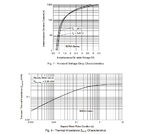Zak28
Advanced Member level 2
Whats the limit on how often an SCR can conduct =>75% of its Itsm current?
Are there applications were SCRs are implemented only to conduct some amount of its Itsm or were SCRs not made to be used only for their Itsm capability?
Are there applications were SCRs are implemented only to conduct some amount of its Itsm or were SCRs not made to be used only for their Itsm capability?

